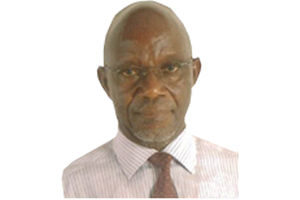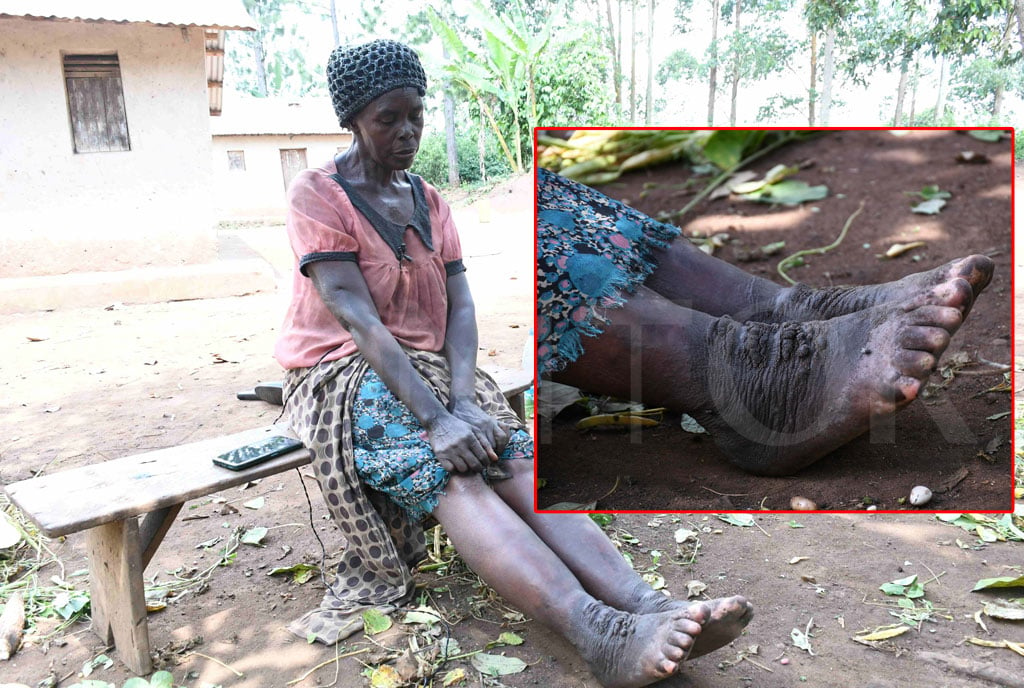
State minister for Agriculture John Nasasira (right) told the NRC session of July 4, 1995, that the locusts had arrived in Uganda via Tanzania. PHOTO/FILE
Twenty nine years ago this month, the Ministry of Agriculture and Animal Industry came under heavy criticism in the National Resistance Council (NRC) for failure to put in place an efficient early warning system.
This, according to members of the NRC, would have enabled the ministry to detect and perhaps avert an invasion by red locusts (Nomadacris Septemfasciata). Red locusts normally breed in some areas of Tanzania, Malawi and Zambia.
Mr Adrian Sibo, a presidential nominee to the NRC, informed the council that it was the Tanzanians that had warned the Ugandan authorities of the impending danger.
“The director of Locust Control had to come from Lusaka [Zambia] to tell us that we had locusts from Tanzania,” he told the council.
Sibo, a Papal Knight, passed on late in August 2016.
The attack on the ministry was precipitated by a report by the State minister for Agriculture, Mr John Nasasira, who told the NRC session of July 4, 1995, that the locusts had arrived in Uganda via Tanzania and were threatening the livelihoods of millions of people in western Uganda.
The paper, Global Overview of Locusts as Food, Feed and other uses, which was published on the website of www.sciencedirect.com reveals that whereas locusts serve as a food source for many animals, locusts on the whole migrate for long distances and in the process destroy 80 to 100 percent of crops and pasture that they come across, exposing bare ground to soil erosion and impacting up to 10 percent of humans.
The paper adds that favourable climatic conditions, including global warming and human activities, are the primary triggers of locust swarming.
Some parts of the world, it adds, have witnessed unprecedented plagues of locust swarms, with sizes covering 2,400 square kilometres and putting up to 20 million people at risk of food insecurity.
Minister’s plea
Mr Nasasira, who was also the NRC member representing Kazo County, then in Mbarara District, tabled the Ministry of Agriculture’s request for Shs300 million to tackle them.
Kazo was initially carved from Mbarara District to become part of Kiruhura District, before it was again carved from Kiruhura to become a fully-fledged district effective July 2019.
The minister informed the House that the first swarm of locusts crossed into Uganda from northern Tanzania into Isingiro County, Mbarara, on June 27, 1995. By the next day, a swarm of half a square kilometre had settled in Kashumba Sub-county.
He said whereas the ministry had been spraying them in day and night operations, two more swarms of about 1km each had been sighted around Lake Nakivale on July 1, 1995.
Wednesday Monitor of July 5, 1995, quoted minister Nasasira telling the NRC that the initial cost of pump spraying would require Shs25 million, but that the cost would jump up to $50,000 because it was necessary to enlist the services of aircrafts from the Desert Locusts Control Organisation of East Africa.
That would require an additional $200,000 to spray the main smarms that were still making their way to Uganda from Tanzania.
Danger
Minister Nasasira told the House that 30 swarms had been sighted in northern Tanzania and seemed to be headed towards Uganda.
“Whatever number of swarms cross into Uganda, with the onset of the second rains, the locusts would be able to establish themselves, multiply a hundredfold and start a plague,” he said.
He warned that if allowed to arrive, it would put the food security situation in the country at risk.
It was against such a background that Nasasira pleaded for immediate parliamentary approval of the ministry’s request for emergency funding.
Kisamba Mugerwa, the NRC representative for Bamunanika County in Luweero, who was then State minister for Finance, but standing in for the substantive minister, moved a motion to give the ministry the Shs300m that it had requested as funding to fight the locusts.
Mugerwa, who held various Cabinet dockets, including that of Agriculture and served on several boards, including that of the Microfinance Support Centre (MSC) and the National Planning Authority (NPA) after retiring from politics, passed on in January 2021. He succumbed to complications associated with Covid-19.
The attack
While standing up to support the motion, Sibo raised serious questions about the Ministry of Agriculture’s ability to manage and account for so much money.
“The Ministry of Agriculture is not the most efficient ministry and it has squandered funds beyond imagination,” Sibo said, sparking off laughter in the House.
Manzi Tumubweine, who was the NRC Member for Rukiga County in Kabale, rose on a point of information and expounded on Sibo’s submission.
“The worry is that whereas Japan, for instance, gives the Ministry of Agriculture $3 million a year, the ministry is never able to account for more than $1 million,” Mr Tumubweine said.
Mr Tumubweine also cited money from the Swedish Development Agency (SIDA), which he said had been wasted and ended up in what he described as “a black hole”.
He warned that even if Parliament approved the funding and money was availed, it would not be a surprise if the fight against the locusts failed.
“It is possible the locusts will [still be around] when the Shs300 million is finished,” Tumubweine said.
Tumubweine passed on in June 2021.
Defence
However, Zachary Olum, who was the NRC member representing Nwoya County, and was also the chairperson of NRC’s Committee on Agriculture, leapt to the defence of the ministry, saying it was not true that the ministry had been unaware of the impending invasion by the red locust.
He also told the NRC that his committee had, together with the team at the Ministry of Agriculture, done a good job for both the NRC and the Council.
“Last year when we had the famine, it took a resolution of this House to force government to take some action,” he said.
The locusts did invade Uganda as the ministry had warned, but the ministry was able to carry out aerial spraying in the areas of Mbarara and Isingiro in what is known to have been the last known invasion by the red locusts.
Mr Nasasira was later elevated to substantive minister of Agriculture, Animal Industry and Fisheries, before being moved to the Ministry of Works, Transport and Communication in 1996 from where he was named Government Chief Whip. He retired from elective politics in 2016.








